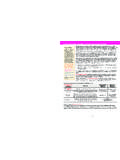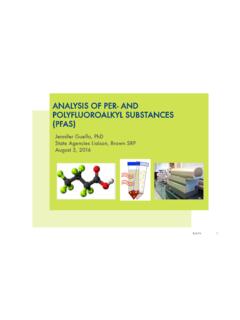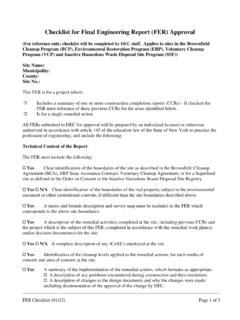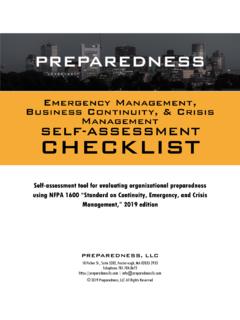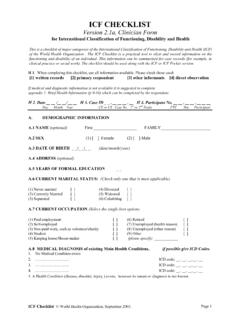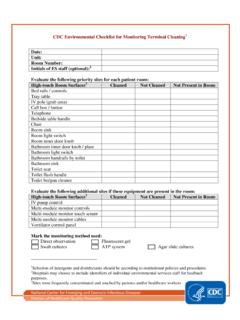Transcription of A Checklist for Auto Repair Shops - Tips for Auto Repair Shops
1 A Checklist for auto Repair ShopsThis self-audit tool is designed to help auto Repair shop owners achieve and maintain regulatory compliance. Municipal health, fire prevention, and buildinginspectors may also find it useful for preliminary screening and for assisting requirements listed here are based on federal environmental and health and safety regulations, as well as nationally recognized fire code. While thechecklist includes the primary concerns of regulatory inspections, it is not intended to be a comprehensive statement of compliance regulatory items listed on this form fall into two main categories: those in Section A relate to overall conditions at the site; those in Section B coverspecific auto Repair shop operations. Section C provides space to comment on any deficiencies observed during an included with this compliance Checklist is a list of tips for preventing pollution, fires, and health and safety hazards.
2 While not required by law, followingthese practices helps to reduce compliance costs and ensure the well-being of only those items that require remedial A: General Walk-Through of Site1. Materials and Waste Storage & Management 6. Routine Car Maintenance(Including oils, solvents, antifreeze and gasoline)o Flammable and hazardous liquids are stored in containers that areeither approved by the US. Department of Transportation or by theState Fire Marshall, or listed and labeled by the National Registrationand Testing Laboratory (UL-listed).o Lids are tight-fitting and sealed, and bungs are Containers, tanks, and flammables cabinets are labeled with thename of the material they hold (for example, waste oil) and the typeof hazard they present ( , flammable).o Flammables are stored in an area (such as an air-tight metalcabinet, metal cabinet vented to the outside, or flammables storageroom) approved by the local fire Waste storage area is labeled and limits of area are Flammable liquids are grounded and bonded during transfer, andgrounded during Solvent Parts Cleaning o There are no leaks or excessive spillage in chemical or waste storageareas, including around solvent sinks, pumps, pipes, hoses, couplings,fittings, and Drums of materials and wastes stored outside of the building havesecondary containment ( , berms).
3 Otherwise, drums are emptyand Building 8. Exhaust System Repair o Building has two-hour firewalls (two walls of sheetrock or masonry)between Repair garage and attached Fire doors are equipped with automatic All openings in walls and ceilings are A 40BC fire extinguisher is available, with 10BC extinguisherspositioned every 50 feet. (Additional extinguishers may be necessaryif the building is made of combustible materials.)o Employees have been trained in the use of fire Signs are posted over each Aisles and emergency exits are clear, and exit signs are postedover Brake Repair ( Grinding drums and turning rotors ) o Smoking is prohibited where the Repair work is done and allowedonly in designated Electrical receptacles have no open grounds or reverse Circuits are labeled and the circuit box is closed.
4 Access to thecircuit box is clear within 5-10 Electrical outlets have cover plates. No wires are frayed, damaged,or taped Air Conditioner and Radiator Servicing o Wiring is enclosed in Electrical Metallic Tubing (EMT) or rigidmetal There is adequate central ventilation and adequate local ventilationfor carbon monoxide from tailpipe exhaust Lighting is Floors 11. Battery and Tire Storage o Floor drains are connected to the sewer (with approval from sewerauthority) or equipped with an approved oil-water separator ortight There are no cracks in the floor that would allow Floors are made of noncombustible material, free of oil and grease,and General Equipment o Underground storage tank and above-ground storage tanks arepermitted by appropriate state agency or local fire department(as required).
5 O Waste oil furnaces are permitted by appropriate state agency orlocal fire department (as required).o There are no illegal furnaces or space heaters in Lifts have operable safety locks, and are tested and serviced Electrical cords are intact and have grounding Light bulbs are teflon-coated (rough service).5. Health & Safety o The shop has written contingency plans for fire prevention, emer-gencies, and spill Spill control materials are available on Material Safety Data Sheets (MSDSs) are available for all No food is consumed in the shop Eyewash and showers providing 15 minutes of continuous flush areavailable in areas where acids and bases are Employees are trained in chemical hazard, safety, and B: auto Shop Operations(Managing waste oil, oily rags, and absorbents)
6 O Drained waste fluids such as waste oil, antifreeze, and solvents arestored in separate drums or Waste oil is removed by a licensed transporter or burned on-site inan approved Oil filters are punctured and hot drained over waste oil drum for therequired amount of time, and then recycled or disposed Oily shop rags are placed in sealed, labeled metal containers andare managed Oily absorbents are disposed according to state Solvent parts cleaner is A licensed transporter picks up and recycles solvents or disposessolvents as hazardous Parts cleaner is labeled with material name and hazard If a flammable solvent is used, the parts cleaner has a fusible linkthat locks shut in the case of Parts cleaner is registered with the state environmental agency(if required).o Welding/cutting is permitted by the local fire Compressed gas cylinders are firmly installed by chaining to aportable dolly or to the wall in an upright Fire extinguishers are available in the welding/cutting Employees wear protective clothing and welding helmets Flammables are not used or stored Machinery is Local ventilation is Employees wear safety glasses with side Equipment is bolted into the Pullies on the grinder are covered with a safety The grinding wheel offset is no greater than 1/8 Shop uses HEPA filtered vacuum system or a wet method of grind-ing to prevent asbestos Refrigerant recovery machines are licensed by Refrigerant recovery operators are certified by Antifreeze is labeled and recycled or disposed If radiator Repair includes brazing.
7 Procedures are in place to controland monitor Batteries are stored in a single layer on pallets or shelving with animpermeable base, and are properly Tires stored outside are covered and properly C: Deficiencies and Recommended ActionsUse this section to note areas where the shop is out of compliance,and to provide information about how to correct deficiencies or anyother information in this document is based on regulations of theNational Fire Prevention Code (NFPC), Occupational Safety and HealthAdministration (OSHA), and Environmental Protection Agency (EPA).Compliance with this document does not constitute full compliance withNFPC, OSHA, or US EPA laws and for auto Repair ShopsThe practices listed on this sheet provide specific ways to save on compliance costs bypreventing environmental pollution and protecting the health and safety of workers.
8 Section A:General Site Conditions Material Storage & Management Routine Car Maintenace Local Resources Purchasingl Order chemicals in appropriate chemicals are costly to dispose andmay pose a fire Inspect materials immediately upon deliv-ery for leaks or other Purchase multi-purpose materials to reducethe number of hazardous chemicals inthe shop. State Resources l l Ask your supplier for the least hazardousmaterials suitable for the job. Review theMaterial Safety Data Sheets (MSDSs) priorto l Organize and label oils, chemicals, and haz-ardous materials in a single storage l Create an inventory system for oils, chemi-cals, and hazardous materials. Rotate Keep unused materials in their Inspect storage areas to identify pointswhere spilled chemicals could enter theenvironment, such as floor drains, doorways, loading docks, catch basins, dirt orcracked floors.
9 Avoid storing, dispensing ormixing chemicals in these Store flammables in a location other thanthe building where people normally work,in a manner approved by local fire andhealth departments. Solvent Parts Cleaning Usagel Use self-closing spigots and nozzles for dis-pensing fluids from bulk Ask employees to return empty containers,such as, spray cans before they use l Pour and mix chemicals in a l Use only one spray can at a time of brakeor carburetor cleaners, lubricants, grease,and sealants. Building / Floors Brake Grinding l l Contract with a fire extinguisher companyto test and fill extinguishers once a Remove overhead items that could causehead Keep floors as dry as possible to preventfalls and potential electrical Use non-hazardous cleaning l Contract with a waste removal company toempty oil/water separators or tanks at leastonce a year.
10 Radiator Flushing and Repair Federal Resources l l Seal floor drains, if approved by localauthorities. Batteries / Tires / Scrap Metal Parts l l Use magnetic covers for drains or dry wells. Outside of Building l Ensure that catch basins have oil separatorsl Keep catch basin sumps empty and Keep wells locked and B: auto Shop Operations -Reducing Spillsl Build berms to contain 110% of the vol-ume of the largest container or tank in thestorage Prevent waste oil spills by using drip oily parts in the drip pan rather thanon the l Use a resealable funnel to minimize spillsfrom drip Up Spillsl If you do spill waste oil, use dry cleanupmethods such as reusable absorbent pads,mops that absorb only oily liquids, or abristle broom and dustpan. Drain excess oilinto drip pans and then into a waste oildrum or l After using dry cleanup methods, removeany remaining waste oil with Use clay absorbents or sawdust only asa last resort.

